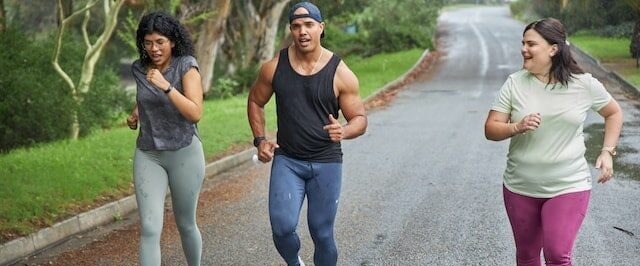
From 1980 to 2014, the number of people living with diabetes worldwide rose exponentially from 108 million to 422 million. Some of the most recent statistics in 2021 place the number at 547 million adults aged from 20 to 79 years old who are living with diabetes. That’s 1 in 10 adults. By 2030, this number is projected to rise to 643 million by 2030.
These statistics have not yet even factored in the number of people with Impaired Glucose Tolerance (IGT), a condition that falls under the spectrum of prediabetes which is 544 million. Any way you look at the picture, the numbers are simply staggering.
There are many factors that contribute to the continuing prevalence of diabetes worldwide. While a lot of interventions focus on biological and behavioral factors which include symptoms, diet, and physical activity, there are also social and physical determinants involved such as employment, income, and education. However, physical activity ranks high among the ways that may help you manage your diabetes symptoms.
Exercise plays a key role in diabetes management. Being physically active and on the move can make your body more sensitive to insulin, the hormone that allows your cells to use sugar for energy. It can also help control your blood sugar levels as well as reduce the risk of heart disease and nerve damage.
Physical activity also provides a lot of other benefits for diabetics: such as:
Physical activity and exercise are key elements in the prevention and management of diabetes, especially type 2 diabetes. Research studies have now established the fact that participation in regular physical activity improves blood glucose control and can help prevent or delay type 2 diabetes.
What’s more, exercise can also have positive effects on lipids and blood pressure, prevent cardiovascular events, influence levels of mortality, and promote a better quality of life.
Studies have also shown that the use of structured interventions that combine physical activity with weight loss has lowered the risk of type 2 diabetes in high-risk populations by as much as 58%.
The exercise guidelines for adults recommend at least 150 minutes of moderate-intensity physical activity weekly. Some good examples of these activities are the following:
It is also recommended that this is supplemented by at least two days of resistance training, using bodyweight, free weights, resistance bands, or machines to train all the major muscle groups of the body (legs, back, hips, chest, shoulders, abs, and arms).
There are studies suggesting that physical activity is most effective in bringing chronic and acute insulin action improvements through the use of both aerobic and resistance exercises.
Stretching exercises can also help in keeping you flexible as well as ward off soreness after working out.
Physical activity is an excellent prescription for better health. This holds true for everyone. For people living with diabetes, regular exercise is important in;
Some experts recommend exercising one to three hours after a meal. For diabetics using insulin, it is imperative to test your blood sugar before exercising. A reading below 100 mg/dL means you must eat a small snack like a piece of fruit to boost it and avoid hypoglycemia. Another test after 30 minutes will show you if your blood sugar level is stable.
Wearing a medical bracelet indicating you are diabetic and/or taking insulin is advisable. You may also keep glucose tablets or candies handy while exercising should your blood sugar level drop drastically while exercising.
After a strenuous activity or workout, it may be prudent to check your blood sugar again. For diabetics taking insulin, the risk of hypoglycemia is highest from six to 12 hours after exercising.
While a diagnosis of diabetes may be life-changing, you can still live a long and healthy life by observing smart management strategies. These include increased levels of regular physical activity, a healthier diet, and weight loss. Remember that exercise is a cornerstone of effective diabetes management and making the right changes in your level of activity can spell the difference between a life full of health or one that is less fun and fulfilling.
References:Dr. Rachelle Sultana, PhD, AEP, M Clin Ex Phys, B Ex Sp Sci
Rachelle Sultana is a highly qualified expert in exercise physiology and clinical exercise. With a PhD and multiple degrees, she combines academic knowledge with practical experience to promote a healthier lifestyle. Follow her on LinkedIn | Instagram
This website uses cookies.